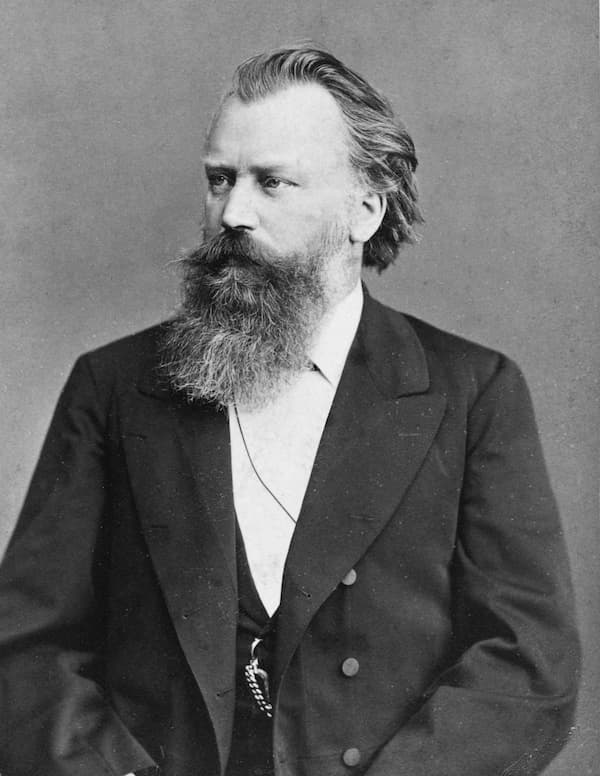In 1918, the American sewing-machine heiress and patroness Winnaretta Singer, the Princess de Polignac, commissioned Manuel de Falla (1876–1946) to create pieces for small orchestra and singers for her marionette theatre.
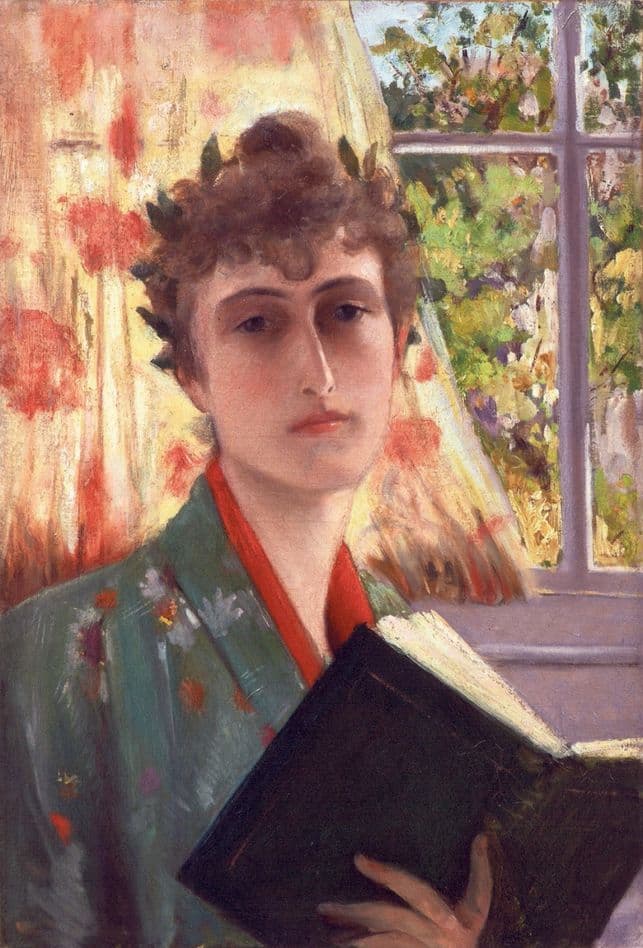
Winnaretta Singer: Self-portrait, ca 1885 (Paris: Fondation Singer-Polignac)
In 1905, Spain had celebrated the 300th anniversary of the first part of Cervantes’ story Don Quixote. Since then, particularly as a part of bringing Spanish Renaissance composers to the public interest, Cervantes’ story was coming to more and more composers’ and writers’ attention.
Falla took his story from Part II of Don Quixote, where Don Quixote and Sancho Panza find themselves at an inn, watching Master Peter’s puppet stage. Falla used a deliberately abbreviated and idiosyncratic ensemble made up of strings, flute, 2 oboes, English horn, and clarinet. Heraldic scenes had 2 horns, a trumpet, and percussion added. An arpa liuto (harp lute) or a concert pedal harp stood in for a lute, and Falla also added that new/old instrument, the harpsichord, then being revived by Wanda Landowska, who played at the work’s premiere.
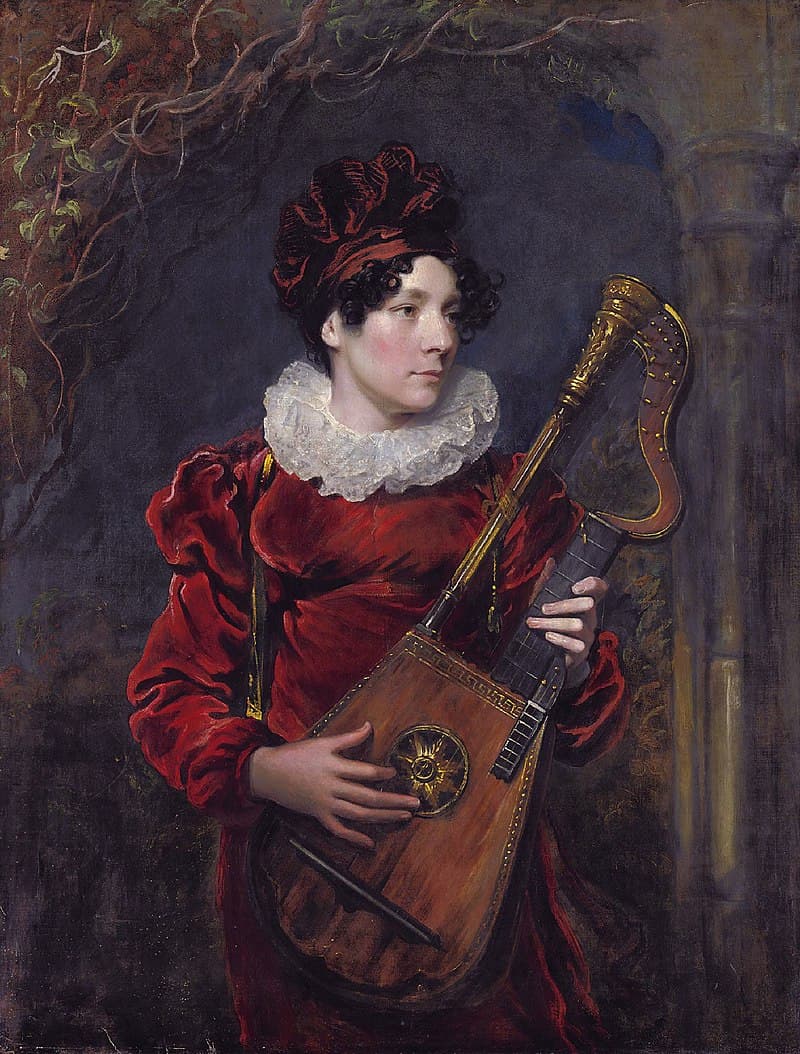
George Henry Harlow: Kitty Stephens playing the arpa liuto
In this illustration by Gustav Doré of Don Quixote from the 1830s, we see Don Quixote on the right, watching the puppet play.
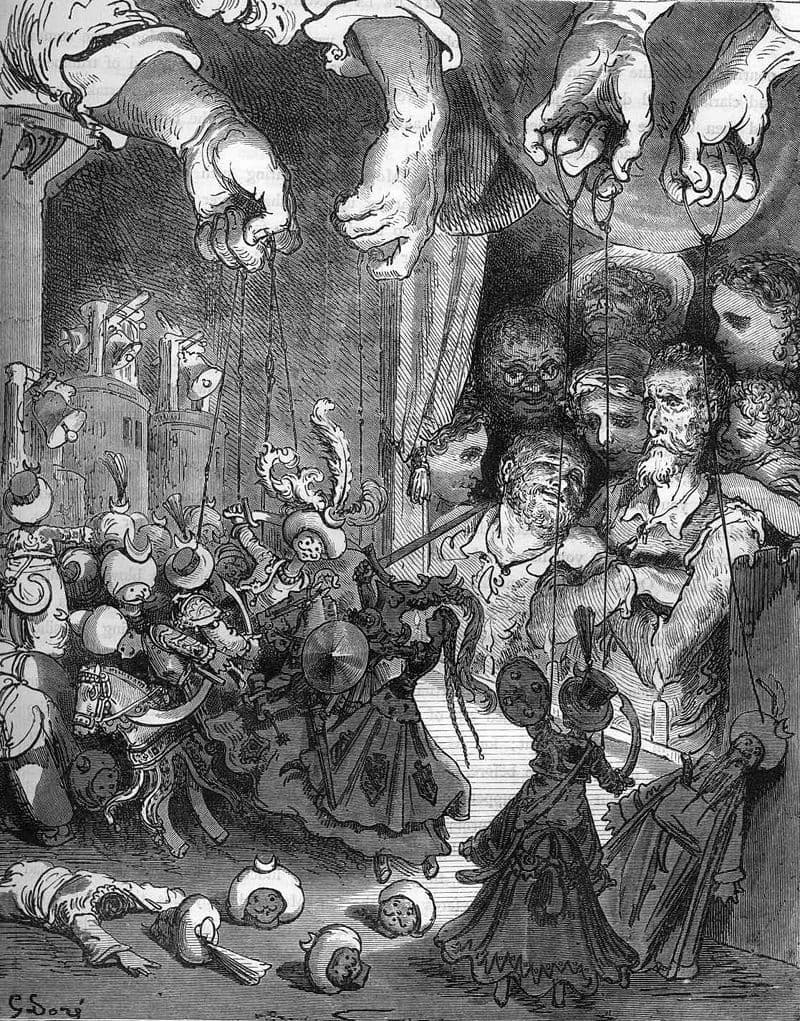
Doré: Illustration from Chapter XXVI of Don Quixote
El retablo de Maese Pedro in a 2015 production of the Teatro Real in Madrid (co-produced with the Gran Teatre de Liceu of Barcelon, the Teatro Meastranza of Seville, the Ópera Foundation of Oviedo, and others), was created with a stage of the play as puppets, and the larger puppets representing the audience with Don Quixote, Sancho Panza, and others.
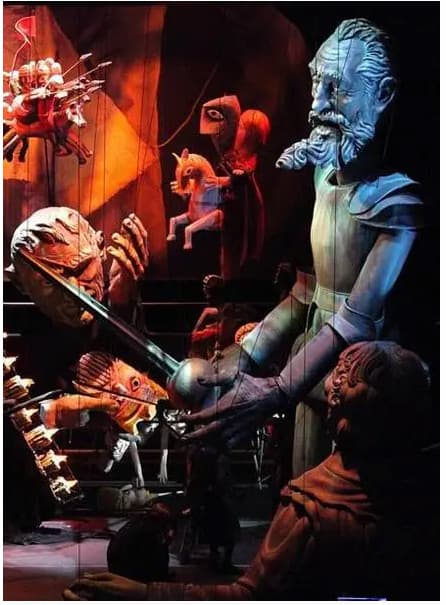
Don Quixote as a Puppet, with the puppet play he’s watching behind him, 2015 (Teatro Real)
To get a real appreciation of the size of the puppets, here’s an image with the orchestra in the foreground, the audience puppets behind them (Don Quixote on the right), and the stage behind them. The audience puppets are large – seven meters tall (in the case of Don Quixote).
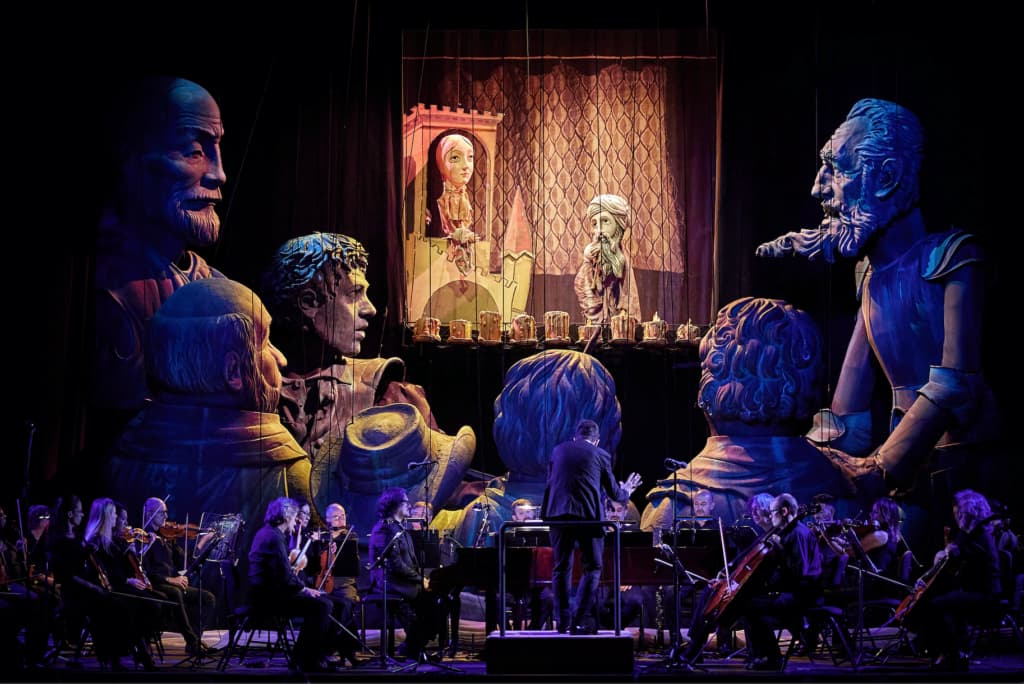
The orchestra, the audience puppets, and the stage, 2023 (Photo by Fermín Rodríguez) (Granada Festival)
The work opens with a proclamation by Master Peter, summoning all to the show, to see the life of Melisendra.
Manuel de Falla: El retablo de Maese Pedro (Master Peter’s Puppet Show) – El pregón (The Proclamation) (Master Peter) (Jorge Garza, Master Peter; Perspectives Ensemble; Angel Gil-Ordóñez, cond.)
Through the work, El Trujamán, the Boy Narrator, sung by a soprano, explains the story. Melisendra has been captured by the Moors, and her father, the Emperor Charlemagne, is very dismayed at the delay by Melisendra’s husband, Señor Don Gayferos, in redeeming her.
Eventually, Señor Gayferos rescues Melisendra and escapes with her, pursued by the Moors, who capture them.
Manuel de Falla: El retablo de Maese Pedro (Master Peter’s Puppet Show) – Scene 6: La persecución (The Pursuit) (Jennifer Zetlan, The Boy Narrator; Alfredo García, Don Quixote; Perspectives Ensemble; Angel Gil-Ordóñez, cond.)
The poor deluded Don Quixote feels it’s his duty as a knight to rescue the fair Melisendra and attacks the puppet theater. Don Quixote makes a speech about how all knights must rescue those in trouble and write their glory into the Book of Fame. Master Peter can only say, ‘He’s a madman!’.
Manuel de Falla: El retablo de Maese Pedro (Master Peter’s Puppet Show) – Final (Finale) (Alfredo García, Don Quixote; Jorge Garza, Master Peter; Perspectives Ensemble; Angel Gil-Ordóñez, cond.)
For a sample of the production:
Falla’s production was generally praised, with much recognition of its invocation of Spain’s Golden Age. The orchestration, in particular, was commented on. At the same time, this is an optimistic view of the past, now all destroyed in the wake of WWI. It’s the past but viewed through modernism’s distorted and broken lenses.
For more of the best in classical music, sign up for our E-Newsletter

